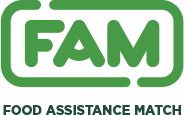Table of Contents
In today’s digital age, technology plays a crucial role in transforming various sectors, including food assistance. The advent of innovative websites and apps has significantly changed the landscape of how food assistance is provided, making it more accessible, efficient, and tailored to meet the needs of those in need. This evolution is helping to bridge gaps in the system, ensuring that more people have access to the food they need when they need it.
Enhancing Accessibility and Efficiency
Streamlined Services through Apps and Websites
- Direct Access to Services: Technology has enabled direct access to food assistance services through user-friendly websites and mobile apps. This means that individuals can easily apply for food assistance programs like SNAP (Supplemental Nutrition Assistance Program) or WIC (Women, Infants, and Children) from their homes without the need to visit offices in person. For example, the app Fresh EBT allows users to check their SNAP balance on their phones, while myBenefits CalWIN in California lets users apply for benefits directly online.
- Real-Time Information: Apps and websites provide real-time updates about eligibility, benefits, and services. This immediate access to information helps reduce the uncertainty and anxiety associated with waiting times and lack of information. mRelief is a platform that simplifies the process of finding out eligibility for food assistance programs, offering users a quick way to see if they qualify.
Improved Distribution Mechanisms
- Localized Food Distribution Apps: Some apps are designed to improve the efficiency of food distribution by connecting donors with food banks and soup kitchens. For instance, Food Rescue US is a platform that facilitates the direct transfer of fresh food from businesses to local food banks, using an app to manage the logistics of food rescue operations.
- Farmers Market Apps: There are also apps designed to enhance access to fresh produce from farmers markets for those using food assistance benefits. Market Match is a program that increases the value of SNAP dollars when spent on fresh fruits and vegetables at participating farmers markets, supported by an app that helps users locate these markets and understand their benefits. Market Match is very similar to our own Food Assistance Match program, located here in Western PA!
Personalization and Community Support
Tailored Nutritional Guidance
- Nutritional Apps: Technology helps tailor food assistance to meet nutritional needs through apps that provide customized meal planning and nutritional advice. For example, Fooducate allows users to scan grocery barcodes to get detailed nutritional information, helping those on food assistance make healthier food choices within their budget.
- Educational Resources: Websites and apps offer cooking tips, recipes, and nutritional guidance to maximize the benefits of food assistance programs. Cooking Matters offers an app that provides recipes and shopping tips to help families and individuals prepare healthy, affordable meals at home.
Community Building and Support Networks
- Social Support Networks: Apps like OLIO connect neighbors to share food and other items, reducing waste and helping those in need find resources locally. This fosters a sense of community and support, as people can give away or find food that would otherwise be wasted.
- Feedback and Improvement: Many apps and platforms now include features for users to provide feedback on services, which helps organizations refine and improve their offerings. This two-way communication ensures that the needs of the community are being met more effectively.
Challenges and Opportunities
Bridging the Digital Divide
- Accessibility Issues: While technology offers immense benefits, there’s a need to address the digital divide that can prevent some from accessing these digital resources. Ensuring that apps and websites are user-friendly and accessible to people with different levels of tech literacy is crucial.
- Multilingual Support: Offering services in multiple languages can help ensure that non-English speakers are able to access and use food assistance services effectively. Many apps now offer multilingual support to cater to a diverse user base.
Conclusion
The role of technology in food assistance is a game-changer, offering innovative solutions to enhance how support is delivered and accessed. From apps that streamline the application process to platforms that connect surplus food with those in need, technology is making food assistance more accessible, efficient, and aligned with the needs of diverse populations.
As we continue to explore and expand these digital solutions, the goal remains clear: to ensure that everyone, regardless of their circumstances, has access to the nutritious food they need to lead healthy, active lives. By leveraging technology, we can create a more inclusive and responsive food assistance ecosystem that not only meets current needs but is also prepared to adapt to future challenges.

